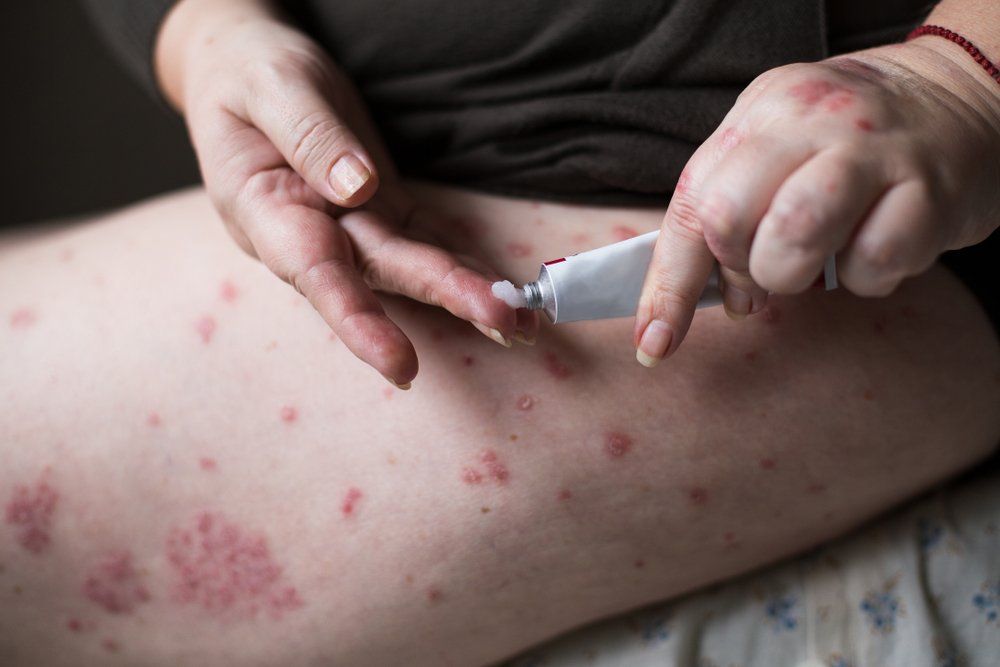- Acne
- Actinic Keratosis
- Aesthetics
- Alopecia
- Atopic Dermatitis
- Buy-and-Bill
- COVID-19
- Case-Based Roundtable
- Chronic Hand Eczema
- Chronic Spontaneous Urticaria
- Drug Watch
- Eczema
- General Dermatology
- Hidradenitis Suppurativa
- Melasma
- NP and PA
- Pediatric Dermatology
- Pigmentary Disorders
- Practice Management
- Precision Medicine and Biologics
- Prurigo Nodularis
- Psoriasis
- Psoriatic Arthritis
- Rare Disease
- Rosacea
- Skin Cancer
- Vitiligo
- Wound Care
Article
Vitamins A and D not beneficial in atopic dermatitis
Author(s):
Topical vitamin A provides no benefit in treating atopic dermatitis, whereas topical vitamin D may actually exacerbate symptoms, according to an evidence-based review.
Topical vitamin A provides no benefit in treating atopic dermatitis, whereas topical vitamin D may actually exacerbate symptoms, according to an evidence-based review. (©TernavskaialgaAlibec/Shutterstock.com)

Topical vitamin A provides no benefit in treating atopic dermatitis, whereas topical vitamin D may actually exacerbate symptoms, according to an evidence-based review.
In contrast, topical formulations of vitamins B, C and E appear to help the disease.
The review, which appeared online July 17 in the journal Dermatologic Therapy, also found that three trace elements â magnesium, zinc and iodine â seem to improve atopic dermatitis, due to their an-ti-inflammatory and antimicrobial effects.
“Atopic dermatitis is a common and burdensome disease with complex etiologies, but we have lim-ited treatment options,” says principal investigator Vivian Shi, M.D., of the University of Arizona in Tucson. “Historically, out of frustration and the need for more effective treatment, over 50 percent of caregivers and patients use nonprescription or complimentary treatments.”
One of these nonpharmacologic treatments is micronutrients, such as vitamins and trace minerals.
“Much of the evidence and attention have been paid to oral micronutrient supplementation in atopic dermatitis,” Dr. Shi tells Dermatology Times. “However, topical micronutrients are also important ad-juvant treatments, yet have received much less attention. “
The goal of the review was to compile existing evidence on the mechanism and benefit (or the lack thereof) of using topical micronutrient formulations in treating atopic dermatitis.
Dr. Shi was inspired by her patients and their caregivers to undertake the review. “As a medical der-matologist specializing in atopic dermatitis, I encourage my patients to be well-read on their skin condition and treatment options. They often come in with stimulating questions,” she says. “But be-cause the disorder mainly affects young children, families are sometimes reluctant to use topical steroids for a lengthy period of time, for fear of side effects. They prefer to add adjuvant treatments to their prescriptions.”
Topical micronutrients have long been thought to have anti-inflammatory, antimicrobial and anti-oxidative properties, and therefore in theory should help atopic dermatitis. “We wrote this review to highlight what we do and still do not know about the benefits of topical micronutrients for the dis-ease. Hopefully, our review can motivate future research directions,” Dr. Shi said.
To date there has been scant research on topical vitamin E and C for atopic dermatitis, despite these two vitamins being often included in commercially available products with claims of antioxidative, antiaging and anti-inflammatory effects.
“There are only two studies of vitamin E, one in mice from 2000 and a small randomized clinical trial of 44 patients in 2016,” Dr. Shi said.
The most widely studied topical micronutrient is vitamin B, which includes B12 (cobalamin), B3 (nico-tinamide/niacin) and B5 (panthotenic acid). “Evidence indicates that topical vitamin B12 and B3 for-mulations can improve the skin barrier function and severity of atopic dermatitis patients,” she said.
“Conversely, there is only one study of topical vitamin B5 that did not find any benefit between a 5 percent vitamin B5 formulation and a hydrocortisone 1 percent cream in children with atopic derma-titis.”
Overall, the topical formulations reviewed are well tolerated with very few to no reported side ef-fects. Additionally, zinc and magnesium appear to play an anti-inflammatory and anti-oxidative role in atopic dermatitis skin.
The studies highlighted in the review used different formulations, such as varying concentrations of the active micronutrient, and even more commonly varying excipient/inactive ingredient composi-tions. “Hence, it is not easy to make conclusions about the overall effect of a particular micronutri-ent,” she said.
Some of the studies reviewed were not randomized blinded control trials while many had a relatively short study duration and small sample size.
“While topical micronutrients hold some promise in improving atopic dermatitis, we still need higher quality studies to confirm their benefit and safety,” Dr. Shi said. “We also need additional research to see how these compounds can be compounded into existing formulations/topical prescriptions to augment their effects.”
Simultaneously, mechanistic research to better understand how these compounds work on a mo-lecular, cell and tissue level in atopic dermatitis skin is needed.
REFERENCES
Maarouf M, Vaughn AR, Shi VY. “Topical Micronutrients in Atopic Dermatitis – An Evidence-Based Review,” Dermatologic Therapy, July 17, 2108 [epub ahead of print]. DOI:10.1111/dth.12659.
Patrizi A, Raone B, Neri I, et al. “Randomized, Controlled, Double-Blind Clinical Study Evaluating the Safety and Efficacy of MD2011001 Cream in Mild-to-Moderate Atopic Dermatitis of the Face and Neck in Children, Adolescents and Adults. The Journal of Dermatological Treatment, 2016, 27(4), 346-350. DOI:org/10.3109/09546634.2015.1115814
Newsletter
Like what you’re reading? Subscribe to Dermatology Times for weekly updates on therapies, innovations, and real-world practice tips.











